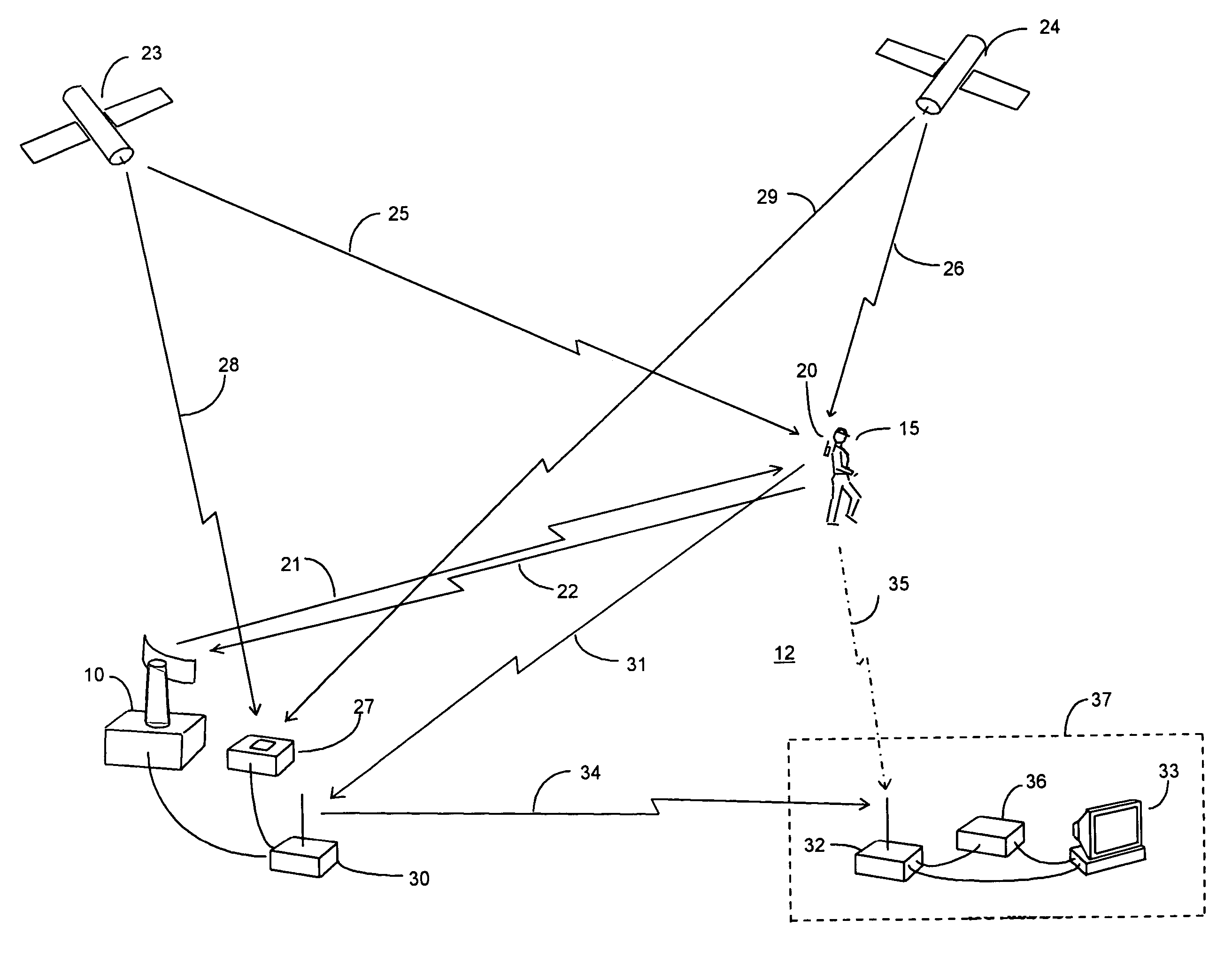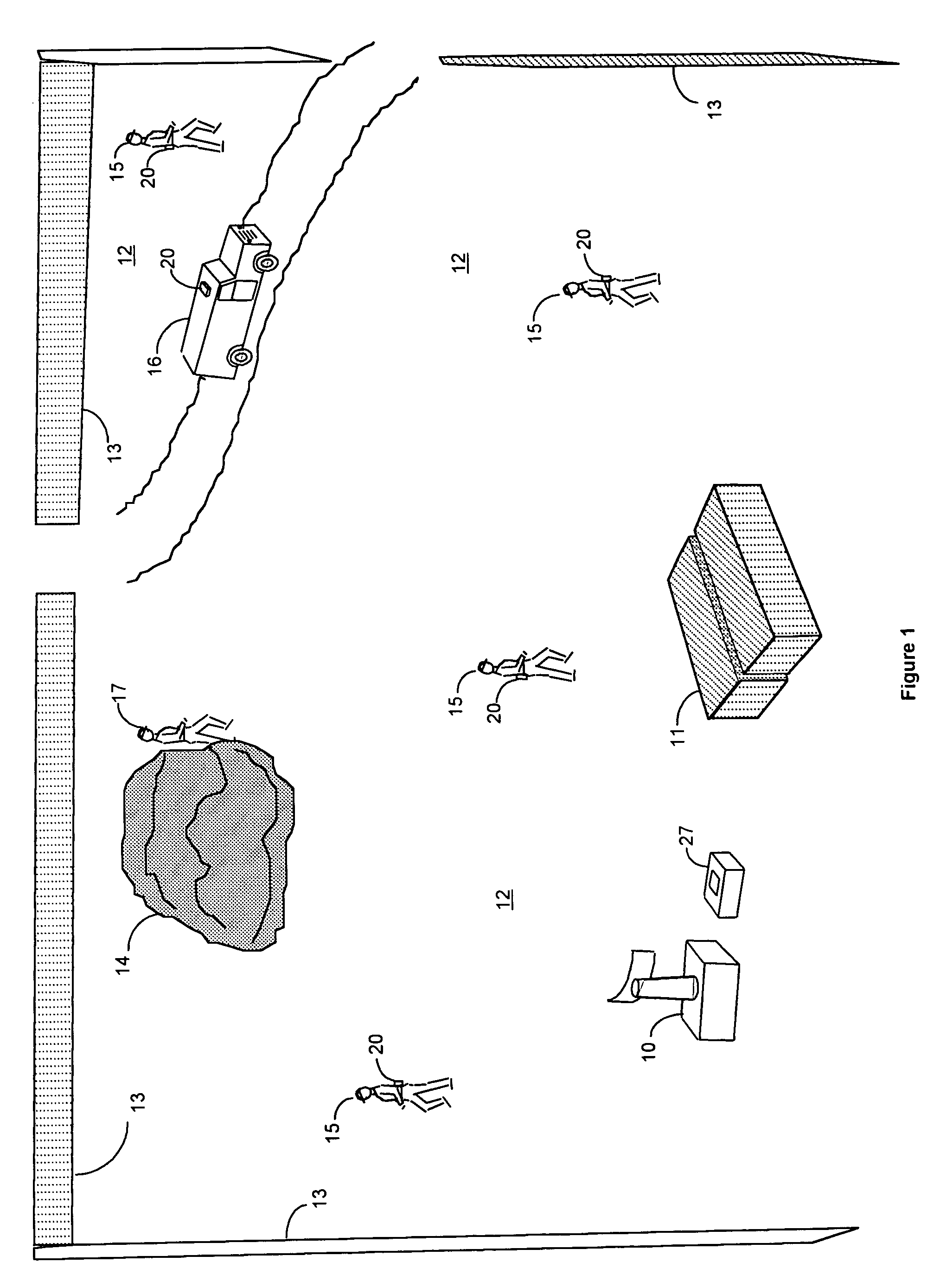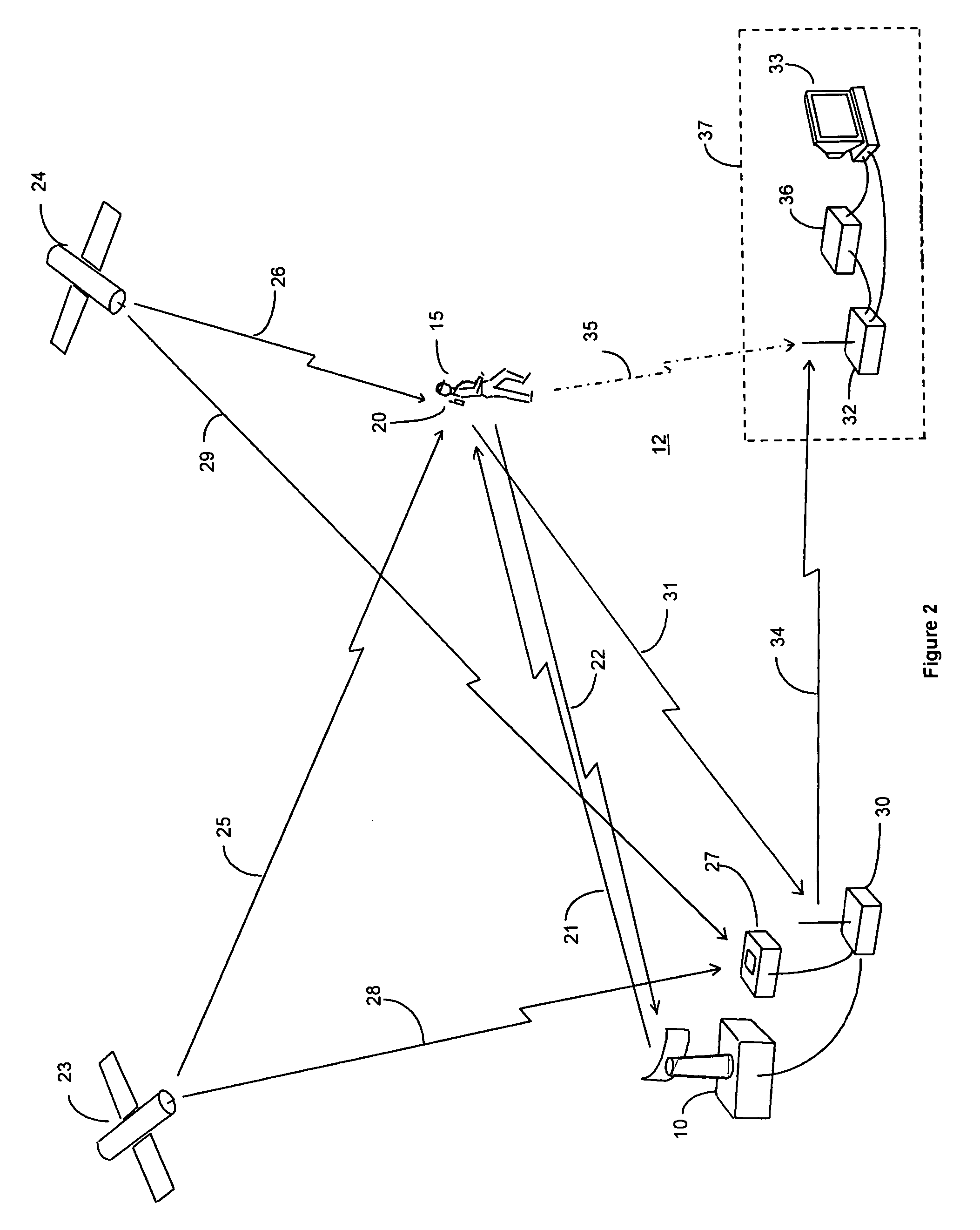Identification and location system for personnel and vehicles
a technology for identifying and positioning agents, which is applied in the field of surveillance systems, can solve the problems of prior art methods that are not practical for use in a surveillance system designed, the location accuracy of the replying agent is limited to the accuracy of a gps receiver operating autonomously, and the surveillance system cannot achieve a detailed identification of each detected targ
- Summary
- Abstract
- Description
- Claims
- Application Information
AI Technical Summary
Benefits of technology
Problems solved by technology
Method used
Image
Examples
Embodiment Construction
[0021]An example of a surveillance system of the present invention deployed to protect a sensitive area is shown in FIG. 1. The surveillance sensor 10 is implemented as a millimeter wave surveillance radar. Containers 11 are depicted as examples of high value assets in need of protection. These containers 11 are located within a secured area 12, defined by the fence 13. Although a fence is shown, the surveillance sensor 10 makes it possible to protect the secured area 12 without the requirement for a surrounding fence. The surveillance sensor 10 has a detection range sufficient to surveil the entire secured area 12, and is typically equipped with a rotationally scanning antenna that provides coverage of the entire secured area 12 including the area surrounding the containers 11. The secured area 12 may include terrain features, such as the rock formation 14, or man made structures (not shown) that generate fixed position returns for the surveillance sensor 10.
[0022]Multiple “friendl...
PUM
 Login to View More
Login to View More Abstract
Description
Claims
Application Information
 Login to View More
Login to View More - R&D
- Intellectual Property
- Life Sciences
- Materials
- Tech Scout
- Unparalleled Data Quality
- Higher Quality Content
- 60% Fewer Hallucinations
Browse by: Latest US Patents, China's latest patents, Technical Efficacy Thesaurus, Application Domain, Technology Topic, Popular Technical Reports.
© 2025 PatSnap. All rights reserved.Legal|Privacy policy|Modern Slavery Act Transparency Statement|Sitemap|About US| Contact US: help@patsnap.com



